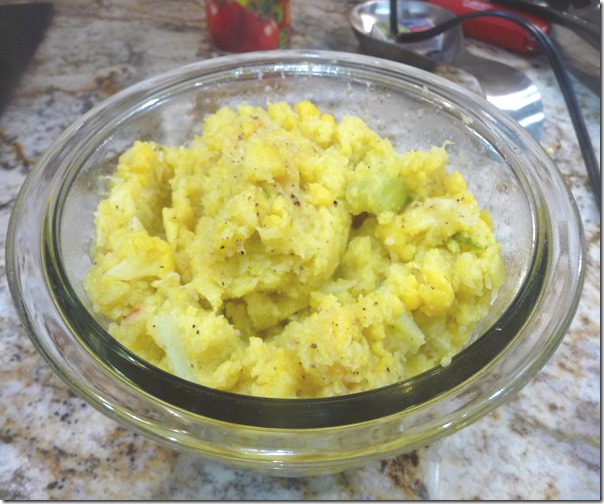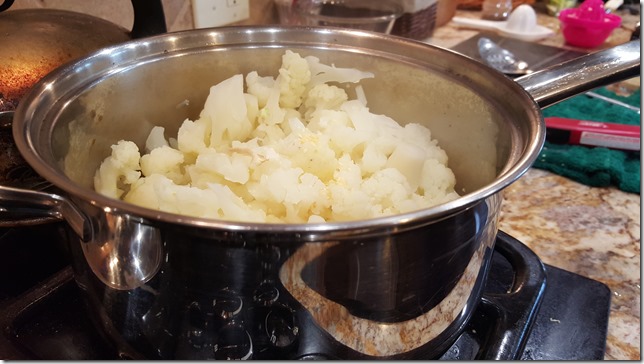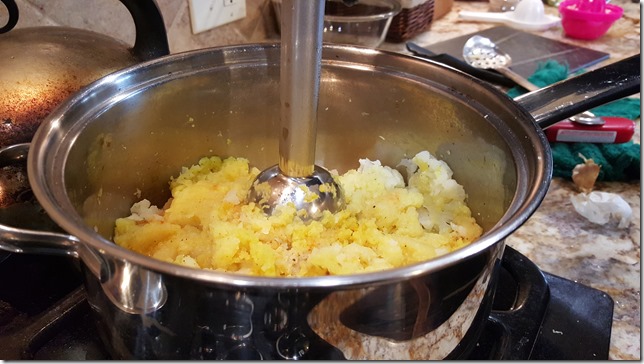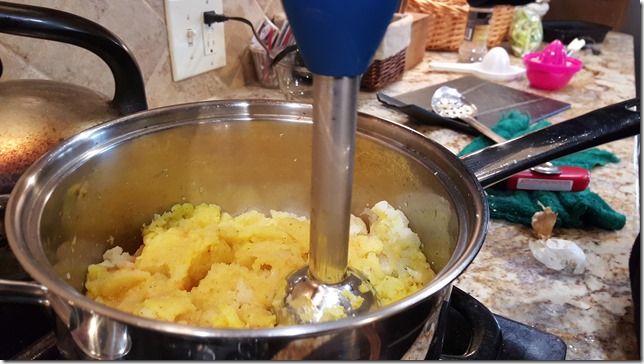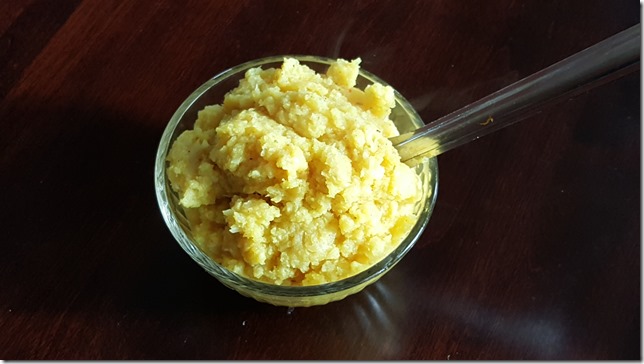As I started to write this, I realized I talk a lot about food I ate growing up, because that’s what inspires me to cook now. I LOVD mashed potatoes, and my mom made the BEST. Seriously- all my friends asked for it. They key was a lot of sour cream to make it tangy, creamy and delicious. Side note: I also love plain, boiled, potatoes. Still do!
Once I started strictly following a low lactose diet- mashed taters no more. Making it with soymilk just wasn’t the same! (We have used greek yogurt,,, I think). I think it was about 2 years ago when mashed cauliflower became a “thing”, either on its own or mixed into potatoes, to lighten them up. We made it once, mixing it with potatoes & soymilk, and it was pretty… eh. This year, I thought I’d give it another go.
I’ve made it 3 times.
aka, it. is. good!
We also love roasting cauliflower, and have been buying the colored cauliflower more and more, because it’s flavor is heightened even more upon roasting! Thus, I used the yellow/orange variety to make this first and it turned out really well, and it looked really pretty- bonus! We couldn’t find any at the store this week (womp womp) so I added some extra turmeric, and it turned out just as good!

So, I was curious as to the differences in regular (white) cauliflower vs. the colored varieties (it comes in purple, orange, and occasionally green). I knew it was due to a higher production of certain antioxidants. Perhaps a higher amount of beta carotene or Vitamin A for the orange? (One is a precursor to another- must look this up. trying to put my nutrition 101 to use!) So, cauliflower is a good source of folate, calcium, potassium and selenium, an is an excellent source of vitamin C. The orange cauliflower is actually brought about by a genetic mutation, allowing the cauliflower to hold on to more beta carotene, and thus contains more V A. Learn more about the health benefits at World Healthiest Foods!
Plus, this recipe is super simple:
boil & drain,
spice & mash/blend!
It;’s not the super thick and creamy potatoes, but light, airy, and spiced. Kind of like if you were to season plain potatoes ![]()
recipe
I found out it’s best to let cauliflower sit for 5 minutes after cutting to reap the full benefits. Also, cruciferous vegetables should be eaten ~3 times a week, 1-1.5 cps per serving, to reap the full benefits, but eating up to 2 cups every day is even better. However, if you have IBS or try to follow a FODMAPs diet like moi, be wary! I find eating it steamed (like this) is the easiest on my stomach, while roasted or eating it raw is a bit tougher.
~Masala Girl
have you revamped a recipe and discovered a new way to love it?
cruciferous veg- yay or nay?
Things to read:
http://www.refinery29.com/2015/11/97350/poor-millennials-food-stamp-snap-program?utm_source=facebook.com&utm_medium=wellnesspost&utm_campaign=repost#.ckajkcl:PNry
I could go on and on about issues with programs like SNAP, but it’s not just the program it’s the lack of knowledge of the users, and some time of the users.
